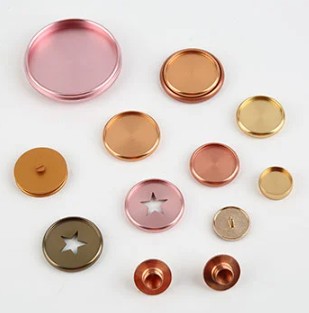Understanding the Essence of Metal Finishing
At its core, metal finishing is the process of modifying the surface of a metal object to improve its appearance, physical properties, and functionality. This versatile technique can be applied to a wide range of materials, including aluminum, stainless steel, brass, and even plastic components. The primary goals of metal finishing are:
Enhancing Appearance: Metal finishing can transform the surface of a part, adding vibrant colors, adjusting the luster, and creating unique visual effects.
Improving Functionality: Many finishing techniques enhance the physical and chemical properties of the metal, such as corrosion resistance, wear resistance, and hardness.
Specialized Modifications: Metal finishing can also be used to adjust the electrical conductivity, remove surface defects, or serve as a primer for further coatings.
Exploring the Diverse Finishing Techniques
Junying's expertise in metal finishing spans a wide range of techniques, each tailored to address specific needs and enhance the characteristics of the machined components. Let's delve into some of the most common metal finishing processes:
Anodizing: This electrolytic process increases the thickness of the natural oxide layer on the metal surface, improving corrosion resistance and allowing for the application of various colors.
Passivation: This chemical treatment creates a protective layer on steel and stainless steel, enhancing corrosion resistance and reducing chemical reactivity.
Plating (Electroplating): Utilizing an electric current, this technique deposits a thin layer of metal, such as chrome or nickel, to modify the surface properties or restore the dimensions of undersize parts.
Painting: The application of paint, pigments, or coatings to the metal surface provides a protective layer and can improve the aesthetic appearance.
Black Oxide: Also known as blackening or gun bluing, this chemical process forms a black conversion coating on materials like stainless steel, enhancing corrosion resistance and reducing light reflection.
Polishing: The process of rubbing or chemically treating the surface to achieve a smooth, shiny finish, often used for decorative or reflective purposes.
Powder Coating: This technique involves applying a dry powder and curing it under heat to create a durable, decorative finish, commonly used for household appliances, automotive parts, and more.
Heat Treatment: Heating or chilling the metal under specific conditions can alter its characteristics, such as annealing, hardening, or tempering, to achieve desired properties.
Satin Finish: This finish imparts a luster between a dull, non-shiny appearance and a bright, glossy one, creating a reflective yet flat visual effect.
Abrasive Blasting: The high-velocity propulsion of abrasive particles against the metal surface can remove contaminants, clean the metal, or create a specific texture.
Conversion Coating: This process involves converting the metal surface into a protective layer through chemical or electrochemical means, primarily used as a corrosion inhibitor or to maintain electrical conductivity.
Tungsten Carbide Coating: This thermal spray coating involves the deposition of a thin layer of tungsten carbide, a compound of tungsten and carbon, to enhance the wear resistance and hardness of the surface.

Selecting the Optimal Metal Finishing Process
When choosing the appropriate metal finishing process, several key factors must be considered, including production time, cost-effectiveness, part tolerance, durability, and the intended application. High-precision CNC machined parts may require careful consideration, as some finishing techniques can alter the dimensions of the finished component.
Junying's team of experienced engineers and skilled operators are well-versed in providing guidance and recommendations to help clients select the optimal metal finishing solution for their unique requirements. Whether you need corrosion-resistant parts, specific color schemes, or enhanced surface characteristics, Junying's comprehensive metal finishing services can help bring your design vision to life.
By leveraging its state-of-the-art facilities, advanced equipment, and industry-leading expertise, Junying is poised to be your trusted partner in the world of precision metal finishing. Unlock the true potential of your CNC machined parts and let Junying's metal finishing solutions elevate your manufacturing capabilities to new heights.







